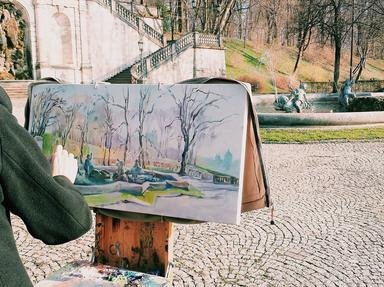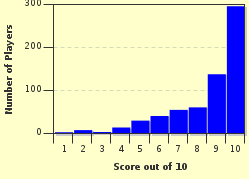Quiz Answer Key and Fun Facts
1. I once helped this Dutch painter, whose wife's name was Saskia. We depicted "The Anatomy Lesson of Dr. Nicolaes Tulp", painted a fair Hebrew wife from the Bible in "Susanna and the Elders" and nicely played with light and shadow in "The Night Watch". Can you guess who I helped then?
2. This other time my partner was a French Romantic painter, considered to be the leader of the French Romantic school. Working with him took me through "Massacre at Chios", let me witness the "Death of Sardanapalus" and allowed me to meet "Liberty Leading the People". Who was he, whom I helped with painting all these historical events?
3. Helping this Spanish painter definitely was a surreal experience. I liked that he worshiped his wife Gala, making her appear in so many of his creations. Together we watched "The Discovery of America by Christopher Columbus", shared our 'messianic' vision of "Christ of Saint John of the Cross" and turned philosophy into art while wondering about "The Persistence of Memory". My buddy was?
4. Oh, the 18th century in Britain. I was grabbed by this English painter and used mainly for landscapes and portraits. He was one of the great English masters and I enjoyed helping him very much. We created a wonderful view of "The Charterhouse", worked with respect on the "Portrait of George III" and had the finest time putting "The Blue Boy" on canvas. Who was my 18th century master?
5. I still can't believe I was so lucky as to be near this Italian painter. Well, he was more than a painter: he was the archetype of the Renaissance man. The man was a very talented genius and I pride myself with being there when "Virgin of the Rocks", "The Last Supper" and "La Gioconda" were created. I'm pretty sure you'll get this one right - who was he?
6. At the beginning of the 20th century I was involved with this Russian painter. He kept moving for a while between Moscow and Munich and then settled in France. He is thought to have painted the first modern abstract work. Fascinated with expressing ideas through various geometrical forms, his paintings have simple names - "Composition VII", "Composition X", "Yellow-Red-Blue". My avant-garde mate was?
7. I'll never forget this fiery and colourful Mexican painter who lived in La Casa Azul (The Blue House) and who painted lots of self-portraits. Married to a painter; a communist sympathizer; a victim of polio in childhood and of a bus accident when 18. I cannot even begin to tell about the many sufferings that were part of this artist's life. Who was the creator of "Self-Portrait with Monkey", "What the Water Gave Me", "The Broken Column"?
8. This influential American painter wasn't too fond of using me, preferring sticks, trowels, knives, basting syringes and a few other not-so-classic painting tools. My help was mostly needed for impasto, to give more substance to his creations, while his favourite technique was action painting - pouring and dripping paint on canvases tacked on the floor. "Number 1", "Blue poles (Number 11)", "Enchanted Forest" - all were fathered by which artist?
9. When I had to help this Spanish painter, co-founder of the Cubist movement, I wasn't very happy to witness his rich lovelife - a few wives and a neverending line of mistresses. I also couldn't stand how he sometimes 'tweaked' people's facial features. But he was one of the greatest artists of the 20th century so I put my personal feelings aside and gladly helped him with "Les Demoiselles d'Avignon", "Guernica" and with a "Self-Portrait in Blue Period". He is?
10. I was so thrilled to be held by this Dutch painter, being in awe of his huge talent and wondering why nobody recognized it while he was alive. Afflicted by a mental illness, with a fondness for absinthe, always overworking and rarely feeding himself, this 'one-eared' painter gifted the world with "Irises" and "Sunflowers" and "The Starry Night". Who is this great artist?
Source: Author
denni19
This quiz was reviewed by FunTrivia editor
CellarDoor before going online.
Any errors found in FunTrivia content are routinely corrected through our feedback system.

